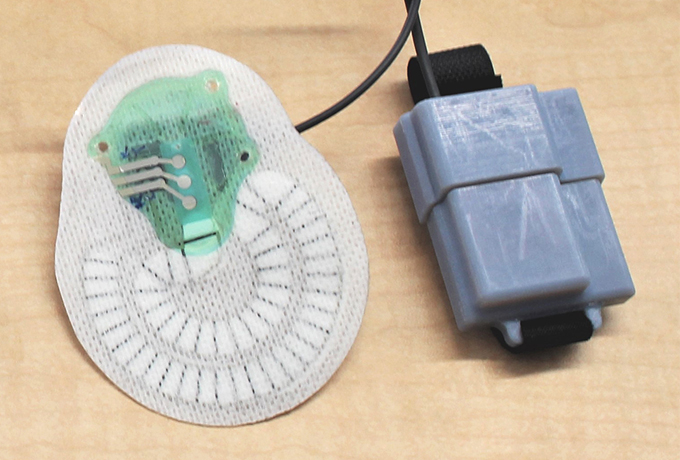WRIGHT-PATTERSON AIR FORCE BASE, Ohio — Through an industry-academia partnership and a recently-released request for proposals, the Air Force Research Laboratory is looking to advance human-monitoring research and development for the future warfighter.
The request for proposals, announced May 6, 2019, targets projects designed to accelerate innovations in health monitoring, diagnostics, and performance augmentation. Specifically, topics of interest include wearable human-monitoring capabilities. The effort is being managed in a partnership between AFRL and SEMI, a global industry association of manufacturing companies.
In 2018, SEMI partnered with AFRL to facilitate and manage additional growth in the Nano-Bio Materials Consortium, a public-private partnership of technology stakeholders. NBMC seeks to bring together entities from across the supply chain—from materials suppliers to system integrators, from technology investors to defense end users and policy makers—to ensure a robust and emerging domestic supply chain for technologies enabled by nano-bio materials, which are expected to have great importance to human-monitoring technologies.
Through the request for proposals, AFRL and SEMI hope to advance the current state of research and development of electronics enabled by nano-bio materials through creating practical and innovative solutions for defense and commercial sectors alike.
“SEMI-NBMC will foster electronics innovation that will enable new directions in digital health and personalized medicine including priorities like en route care in aeromedicine,” said Melissa Grupen-Shemansky, SEMI CTO for Flexible Electronics and Advanced Packaging.
According to Dr. Jeremy Ward, Advanced Development Team Lead for the AFRL Soft Matter Materials Branch, the partnership with SEMI has proven to be a major enabler in the growth and maturation of the consortium.
“Since the initiation of the NBMC in 2013, we have been growing the community and shaping how we leverage project calls and workshops to communicate technical advancements and challenges in a collaborative forum. In this next phase, with the help of SEMI, we will begin to put more focus on delivering unique capabilities within the USAF aeromedical evacuation mission.”
Ward says that through the consortium, AFRL aims to address a wide variety challenges of importance to the warfighter.
“We expect to tackle technology developments that are diverse in scope and maturity,” Ward said. “We have a broad membership that is capable of addressing a wide range of technical challenges. This ecosystem of strategic thinkers and creative developers is capable of delivering innovative solutions to support the warfighter well into the future. We want NBMC to be the forum to enable that.”
Operational and Aeromedical Health Product Line Lead Tamara Averett-Brauer of the AFRL 711th Human Performance Wing adds, “Aeromedical evacuation is a core en route care capability that the US Air Force provides to the Joint Force. Adapting medical equipment to perform in this unique aerospace environment can be challenging and we welcome innovative partnerships like these with industry and academia to tackle these challenges.”
Ward hopes that pairing the diverse academic and industrial membership and leadership within SEMI with a commitment to impose defense environments and stakeholders earlier into the development process will accelerate the application of new capabilities within the aeromedical mission.
“We look forward to the ideas and development that come out of this community for the advancement of human-monitoring technologies that truly represent dual-use capabilities for both the commercial and defense sectors,” said Ward.


